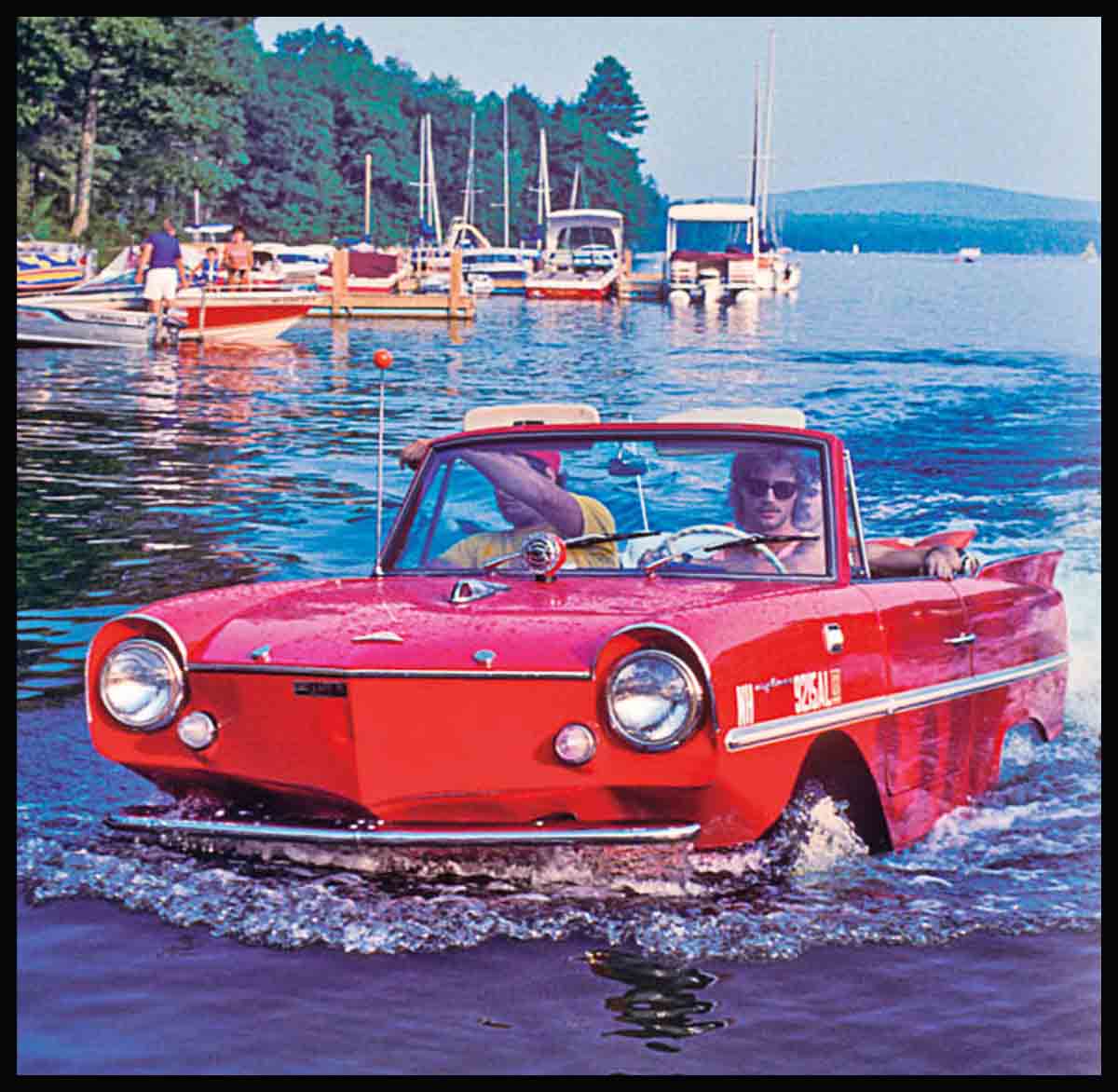
Amphicar 770
The most successful contender in an admittedly very small field, this German-built, amphibious vehicle was exported around the world in the 1960s. An undoubted oddball, it even developed a small cult following in the US, where around 3,000 examples were sold, and survivors are still highly collectable. In 1968 an attempt by two owners to cross the English Channel in a pair of cars proved successful, although to the delight of waiting reporters, one finished the voyage being towed by the other.
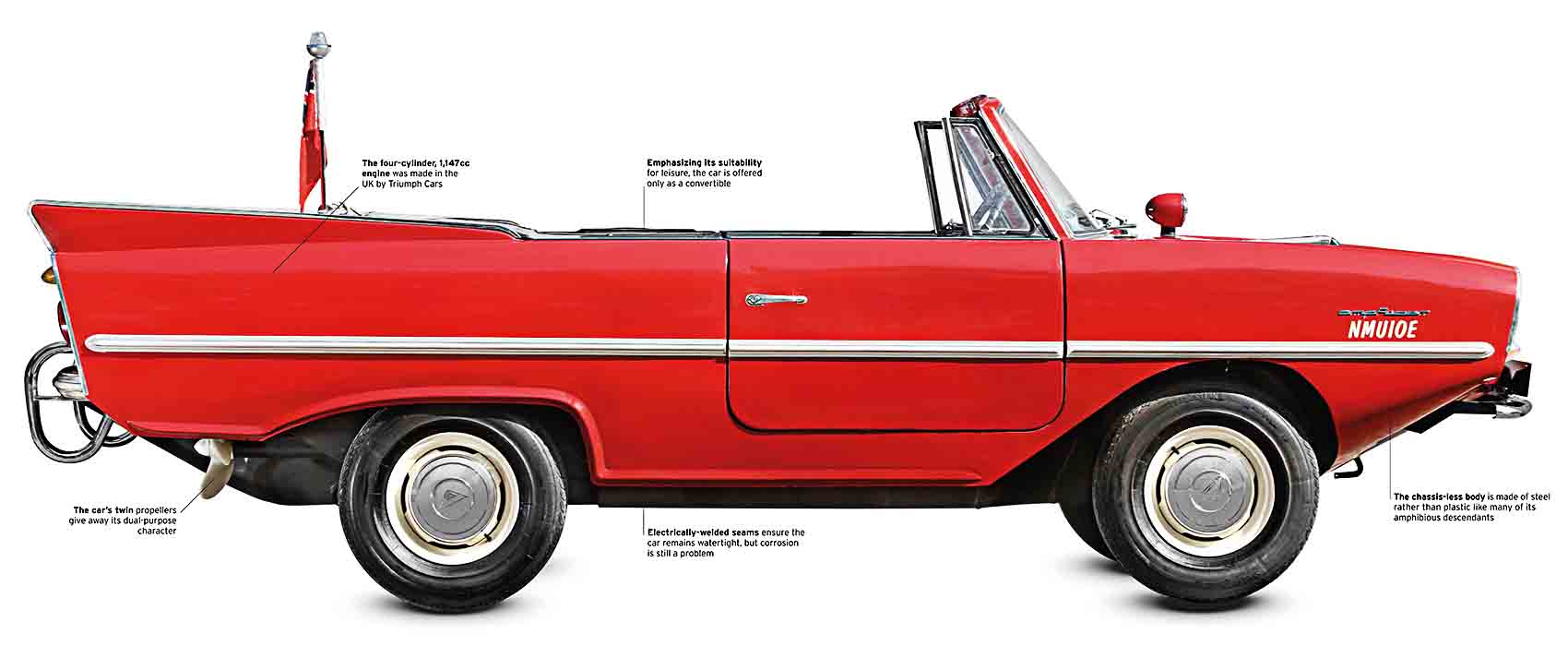
FOR ALMOST AS long as there have been automobiles, people have dreamed of cars that can fly as well as ones capable of taking to the water. German Hans Trippel had experience of amphibious models, both military and civilian, in the 1930s before unveiling one of his own, originally called the Eurocar, in 1961.
A rear-mounted Triumph Herald engine powered the back wheels, giving a top speed of 70 mph (113 km/h). Off-road the drive switched to a pair of small propellors capable of pushing the open-topped car along at a steady 6.5 knots or about 7 mph (12 km/h). Instead of a rudder the vehicle steered using the front wheels, a set-up that worked well in calm conditions.
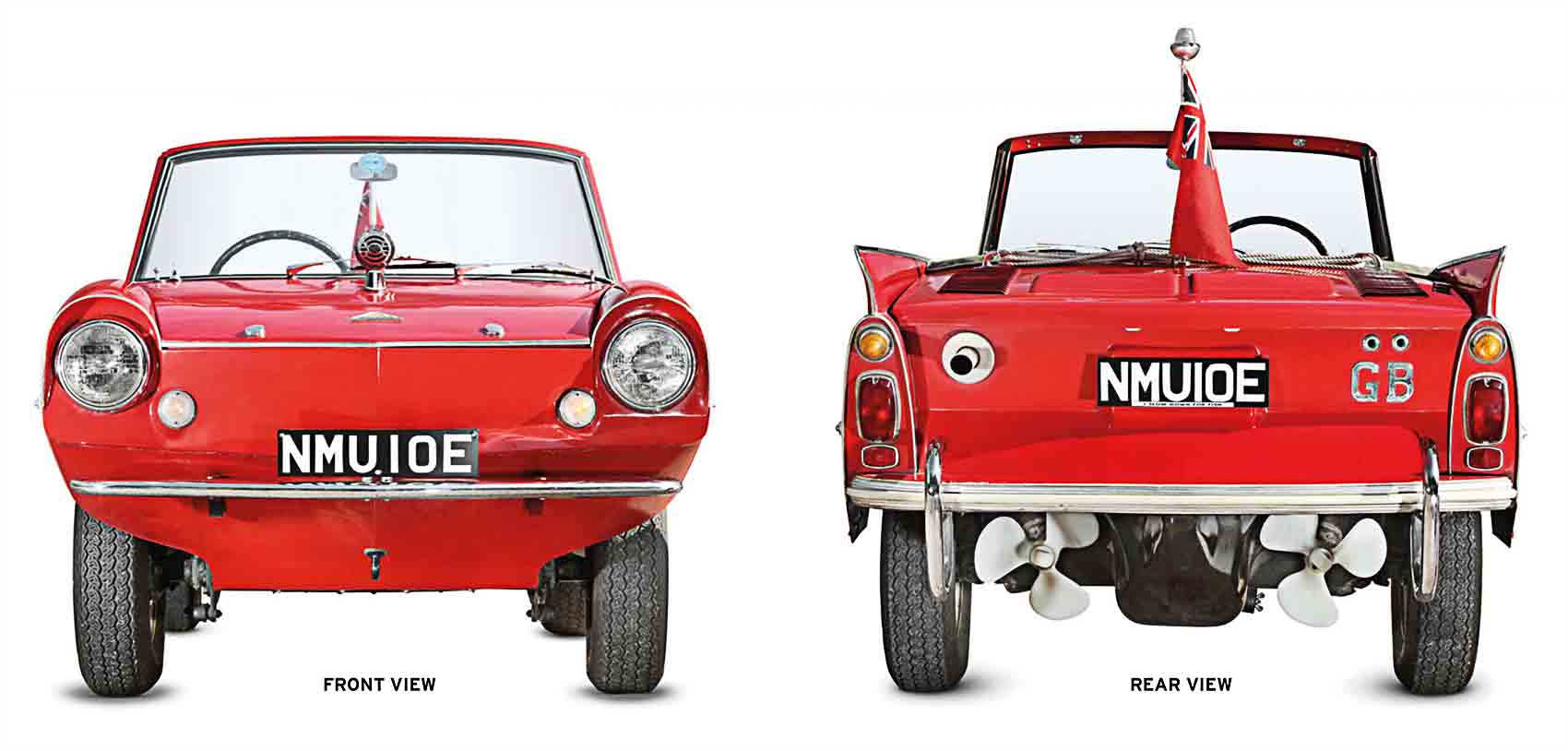
SPECIFICATIONS
| Model | Amphicar 770,1961-68 |
| Assembly | Lubeck, Germany |
| Production | 3,878 |
| Construction | Unitary steel construction |
| Engine | 1,147 cc, flat-four |
| Power output | 43 bhp at 4,750 rpm |
| Transmission | 4-speed manual |
| Suspension | Coil springs front and rear |
| Brakes | All-round drums |
| Maximum speed | 70 mph (113 km/h) on land, 7 knots on water |
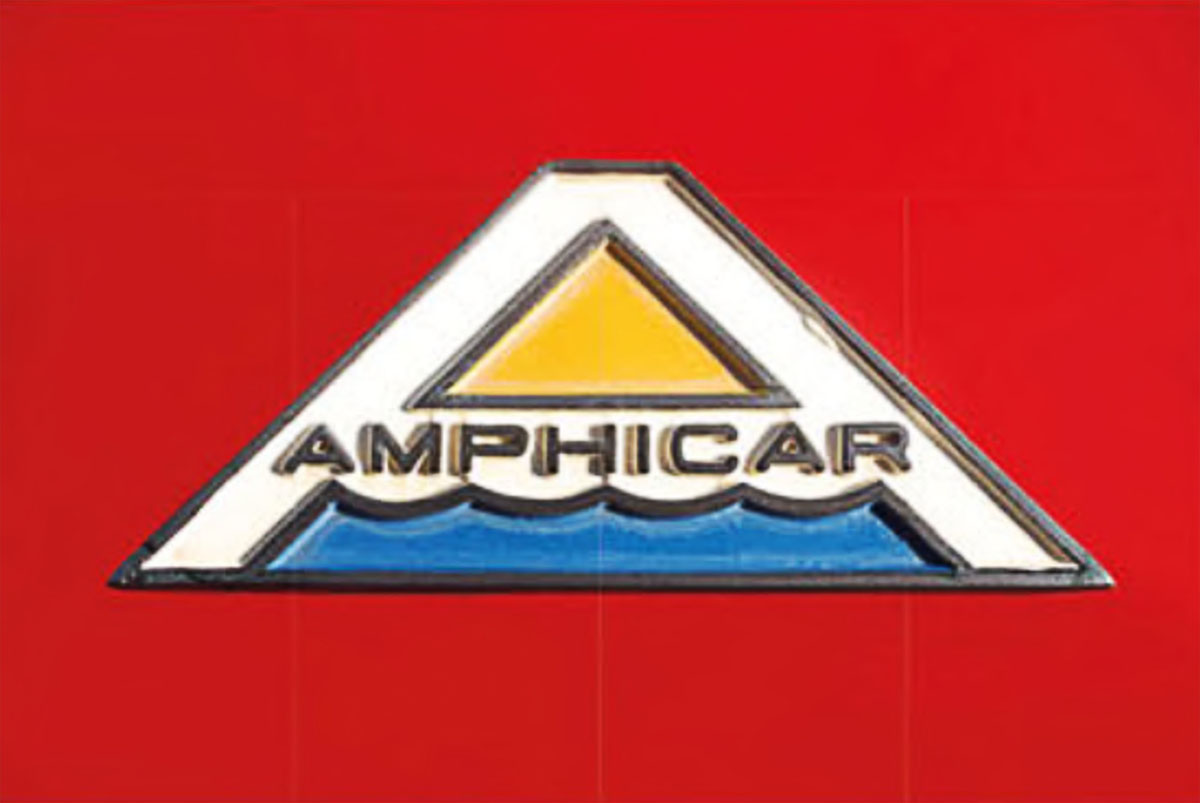
Amphicar badge
If the name was not enough of a clue as to the car’s identity, the wave pattern at the base of the A-shaped bonnet badge provided a clear indication of its creator’s hope that adventurous owners would dive right in.
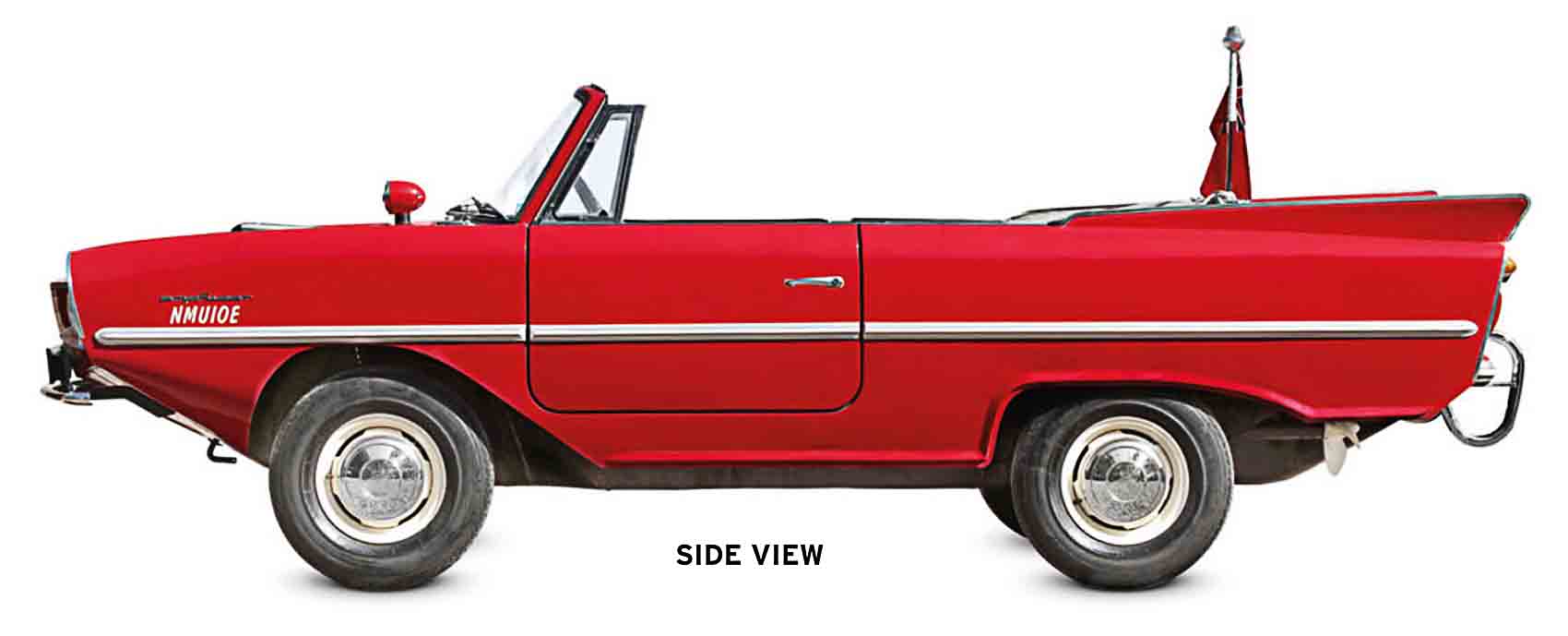
Styling
Unlikely to win an award for its looks, the Amphicar’s styling was nevertheless clean and distinctive. Small fins at the vehicle’s rear looked fashionable and defended the flanks from waves, but the short wheelbase, cutaway arches, and high ground clearance could look a little strange parked alongside more conventional models.
ON THE ROAD
The Amphicar was a descendant of the four-wheel drive Volkswagen Schwimmwagen. Developed from the original VW Beetle, this small, amphibious, Jeep-like vehicle was used by the German army in considerable numbers from 1942 onwards.
With financial backing from Deutsche Industrie-Werke, the Amphicar’s designer, Hans Trippel, set out to create a vehicle based on the same principles, but intended purely for recreational purposes. The Model 770 was launched at the New York Auto Show in 1961, and despite offering only limited performance compared to most cars or boats it became the only amphibious civilian passenger vehicle to be mass-produced. Several thousand were manufactured by the Quandt Group until 1968, when the design was unable to meet newly introduced safety regulations in the US.
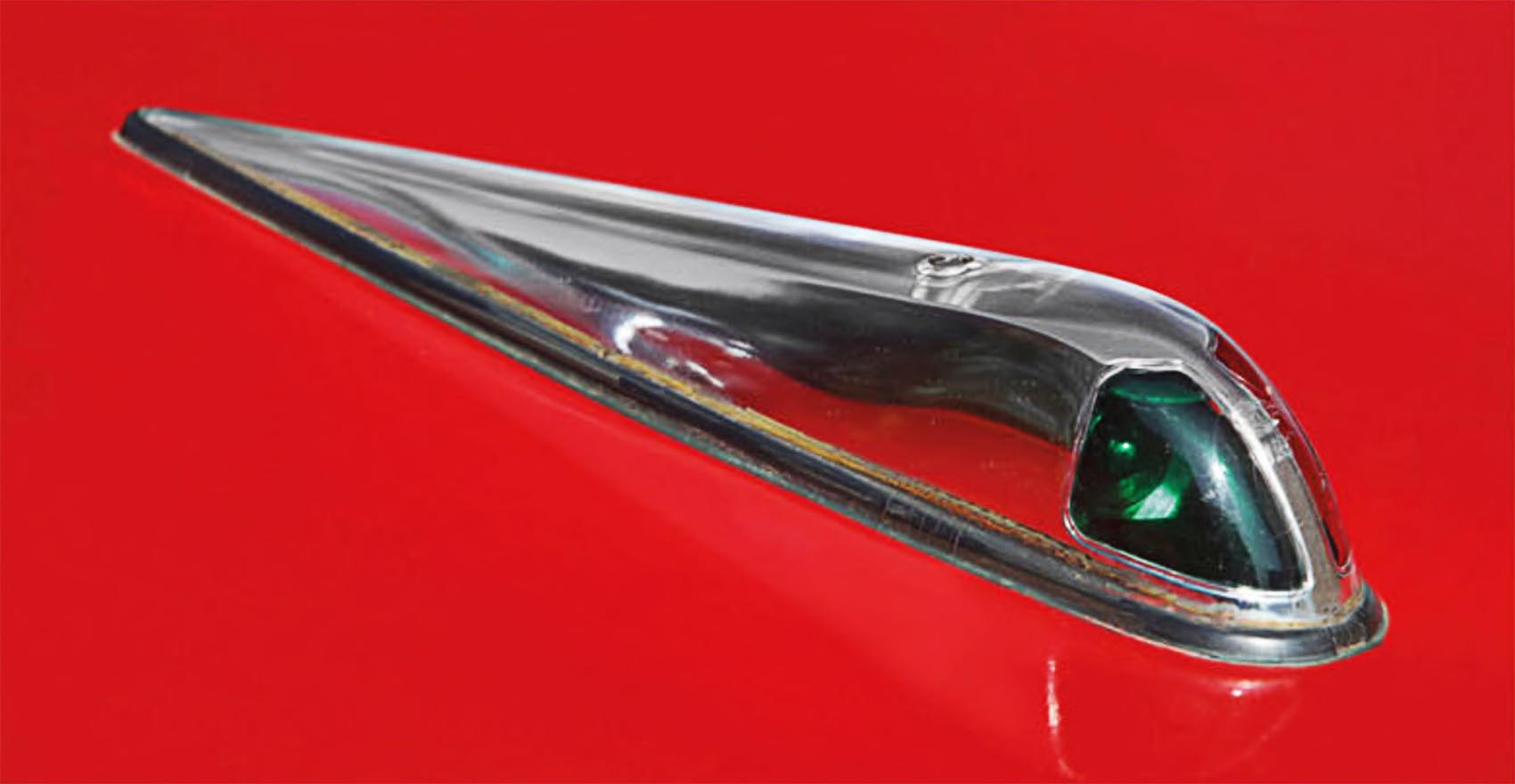
Red and green navigation lights
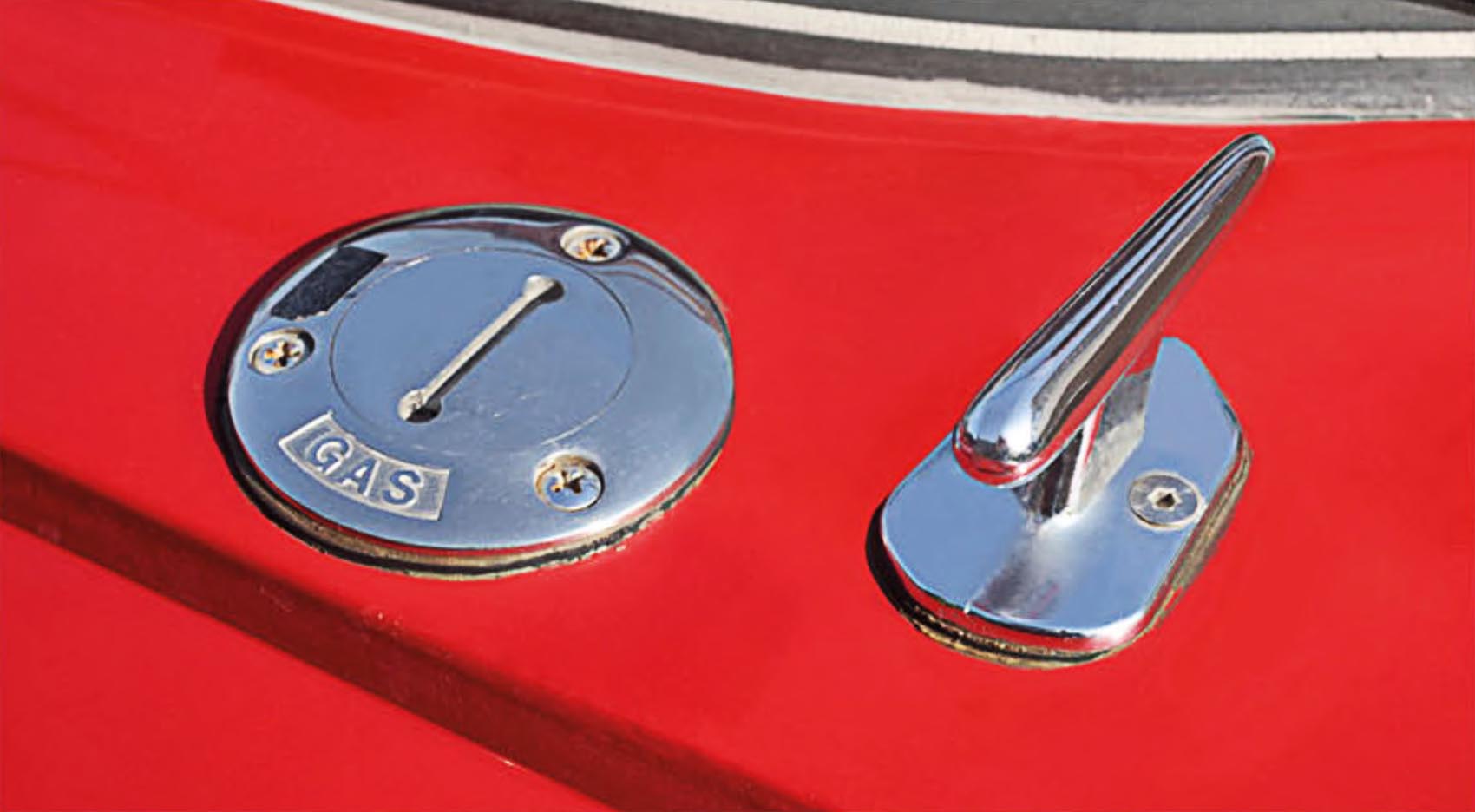
Fuel filler cap and chrome cleat
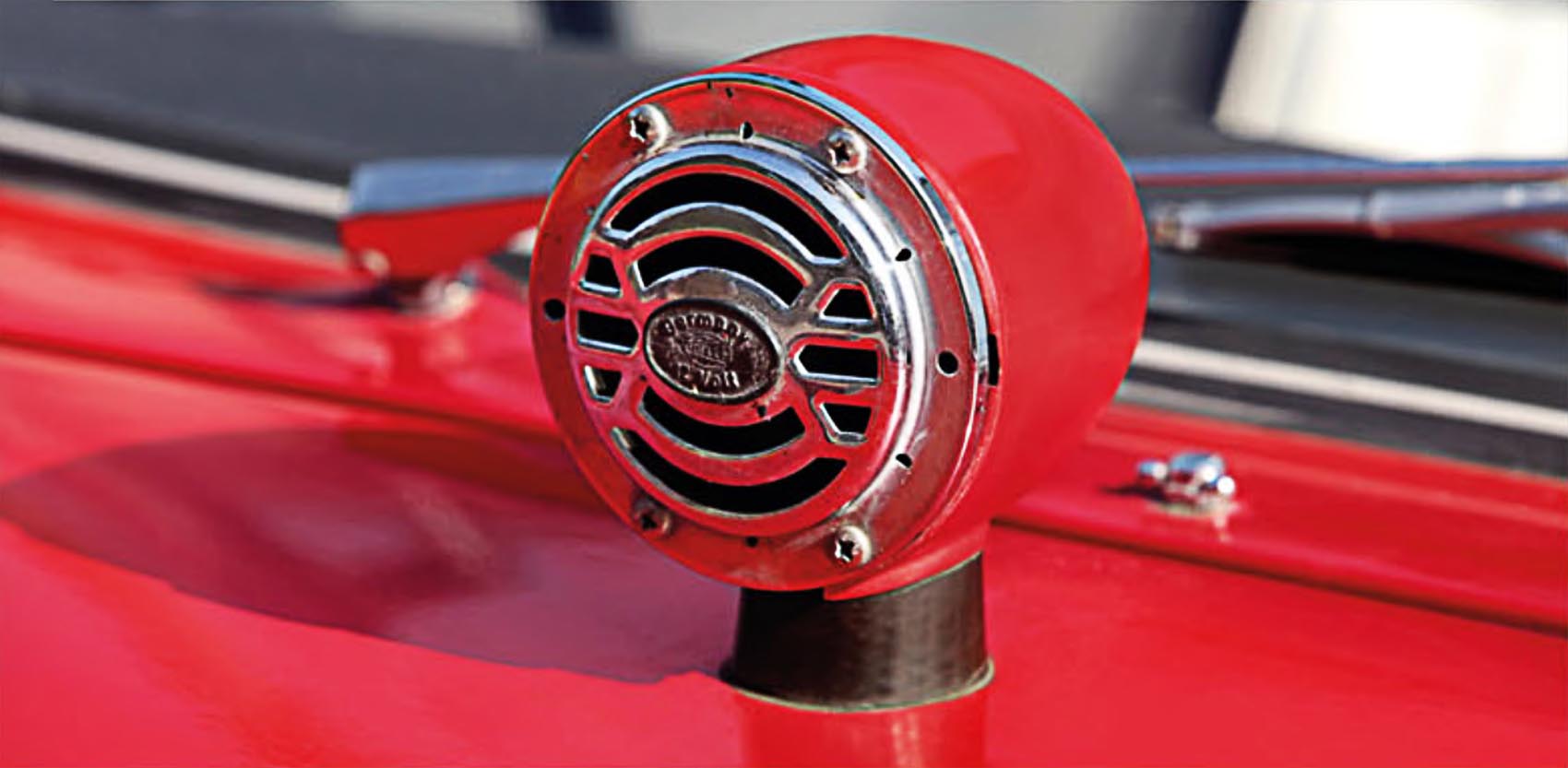
Externally-mounted horn
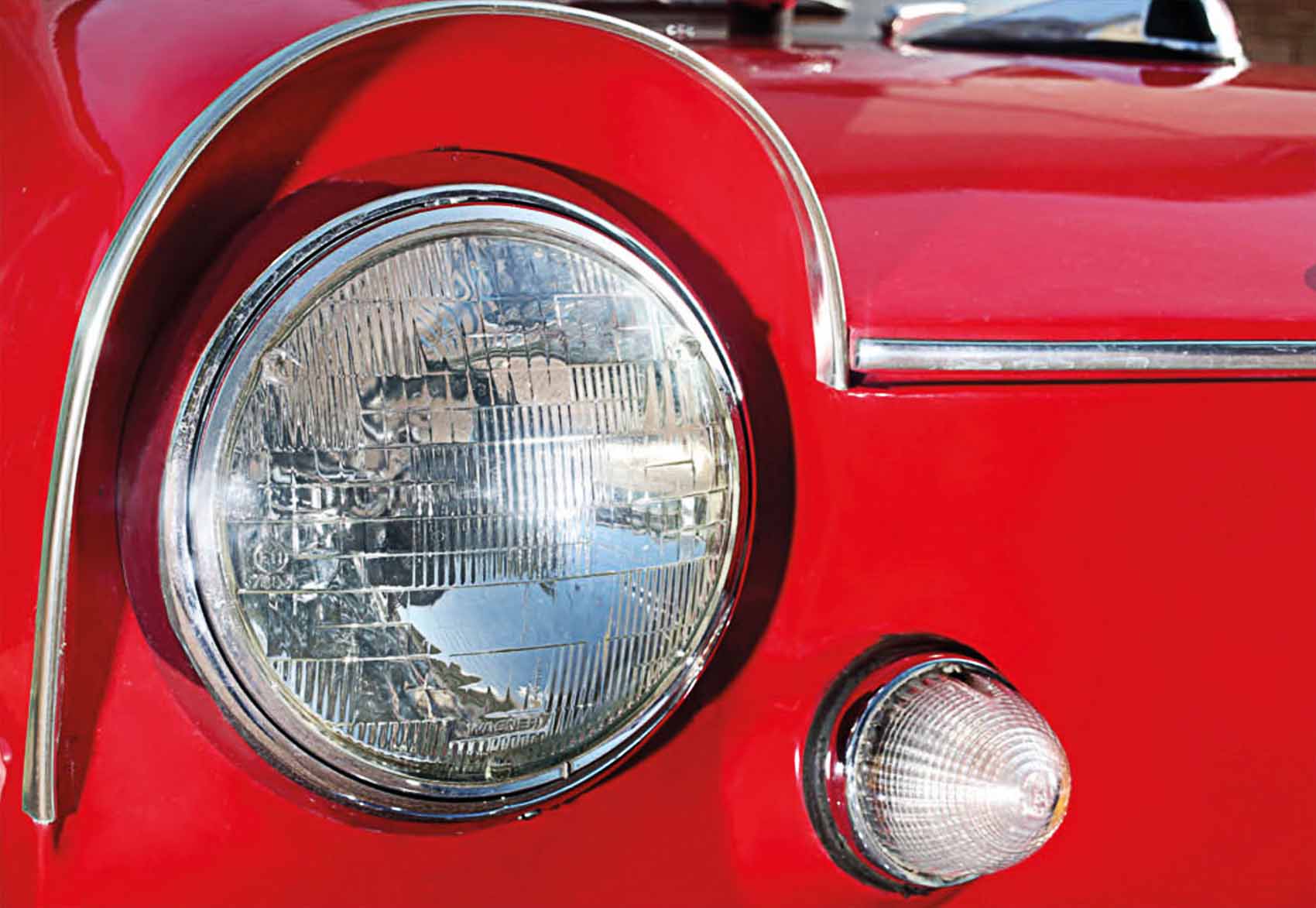
Chrome decorative detailing typical of period
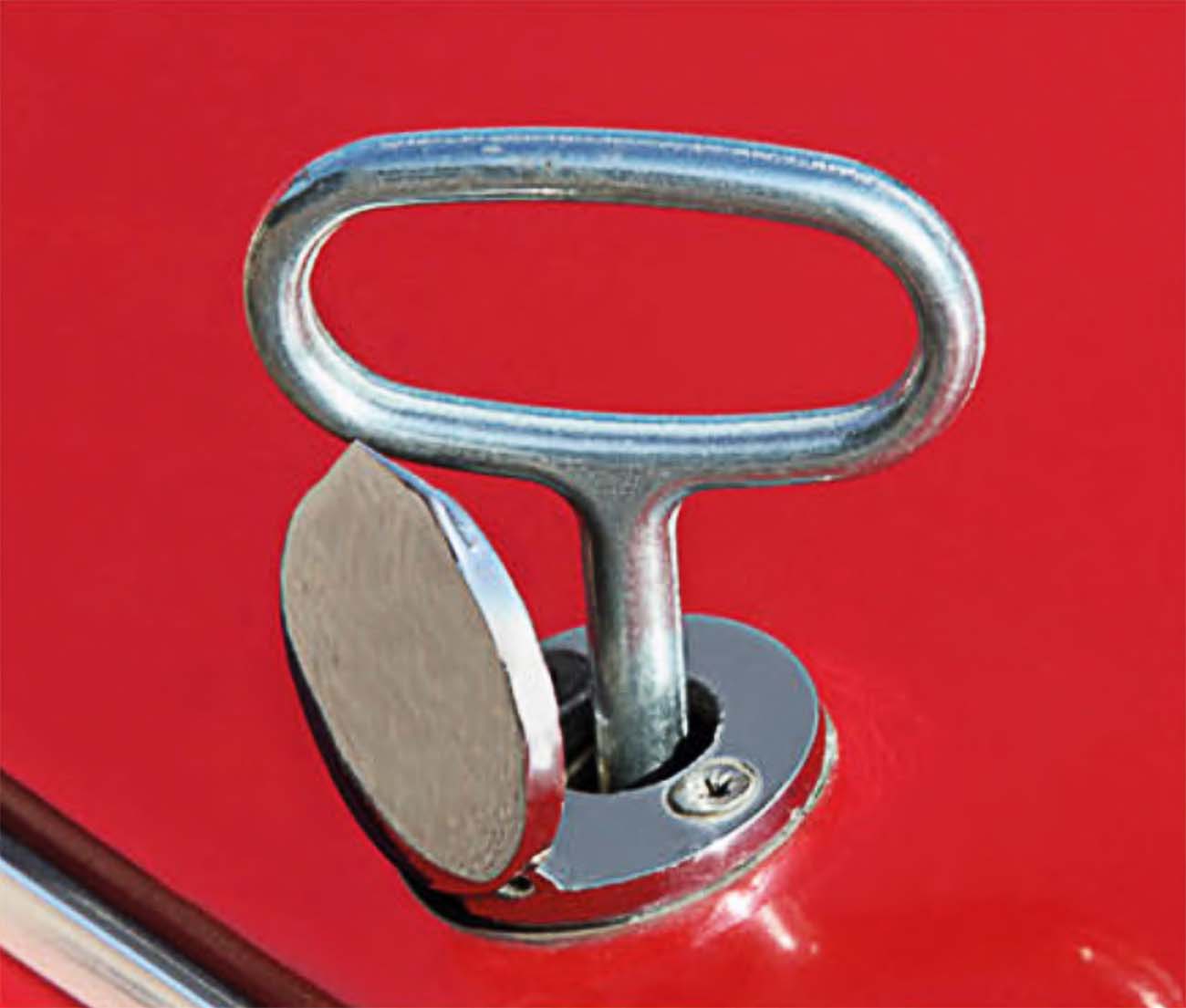
Removable bonnet key
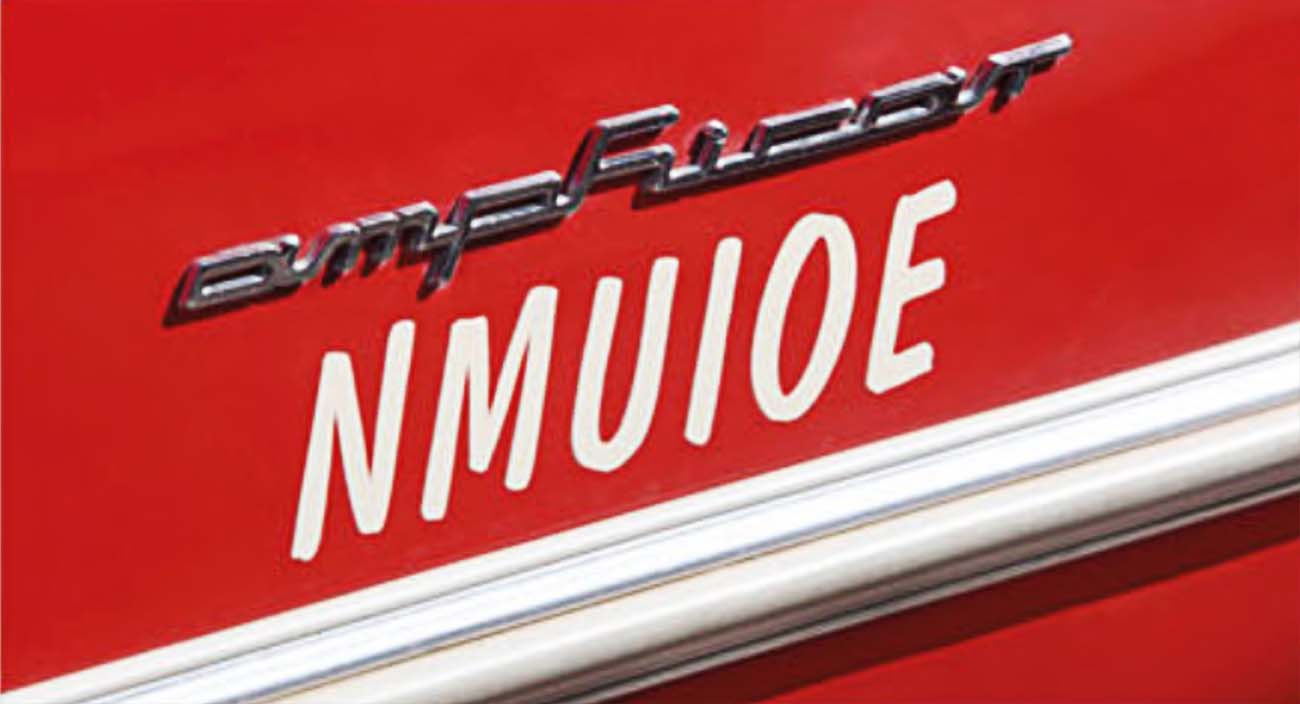
Registration number repeated on bodywork
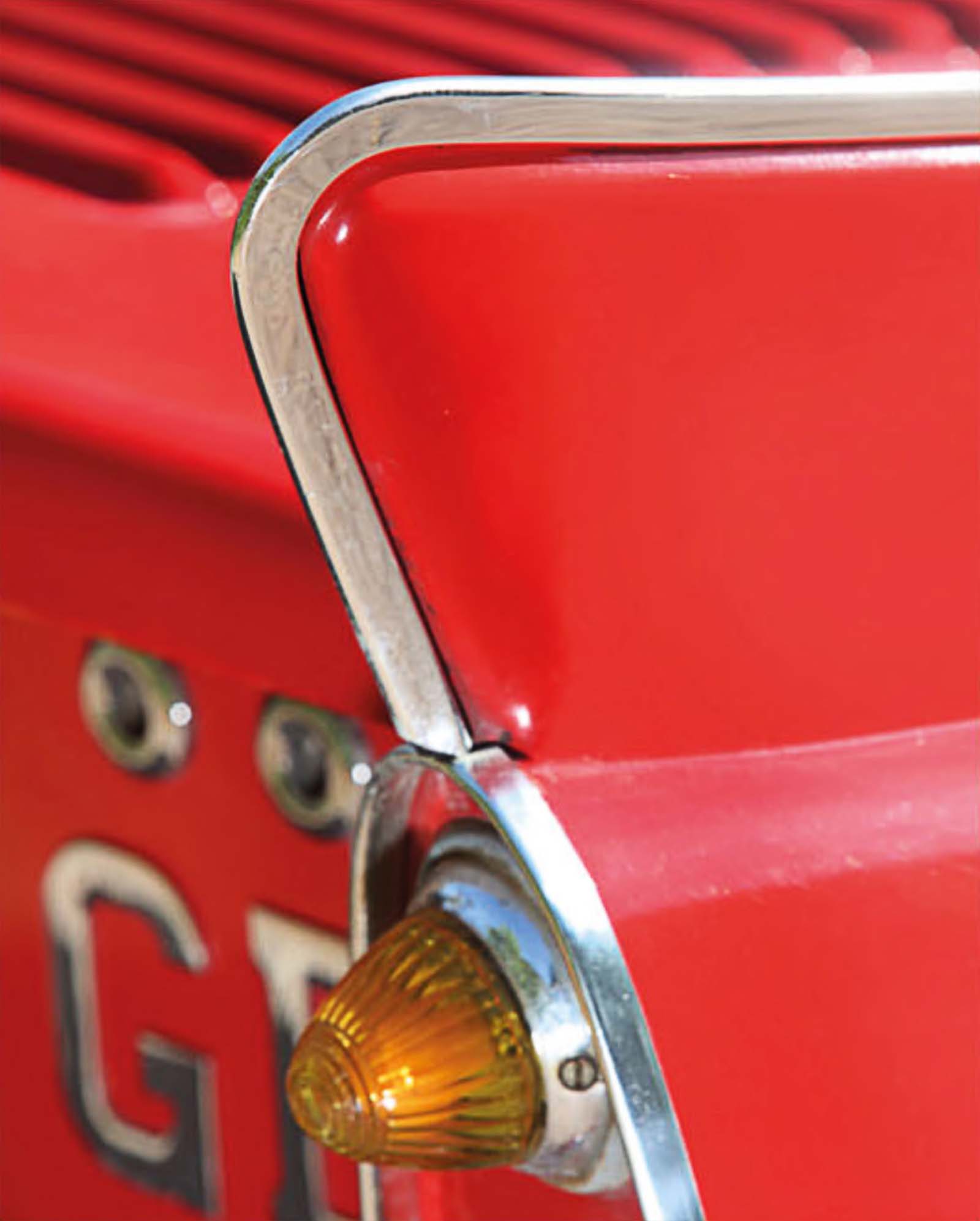
Fins contain rear light cluster
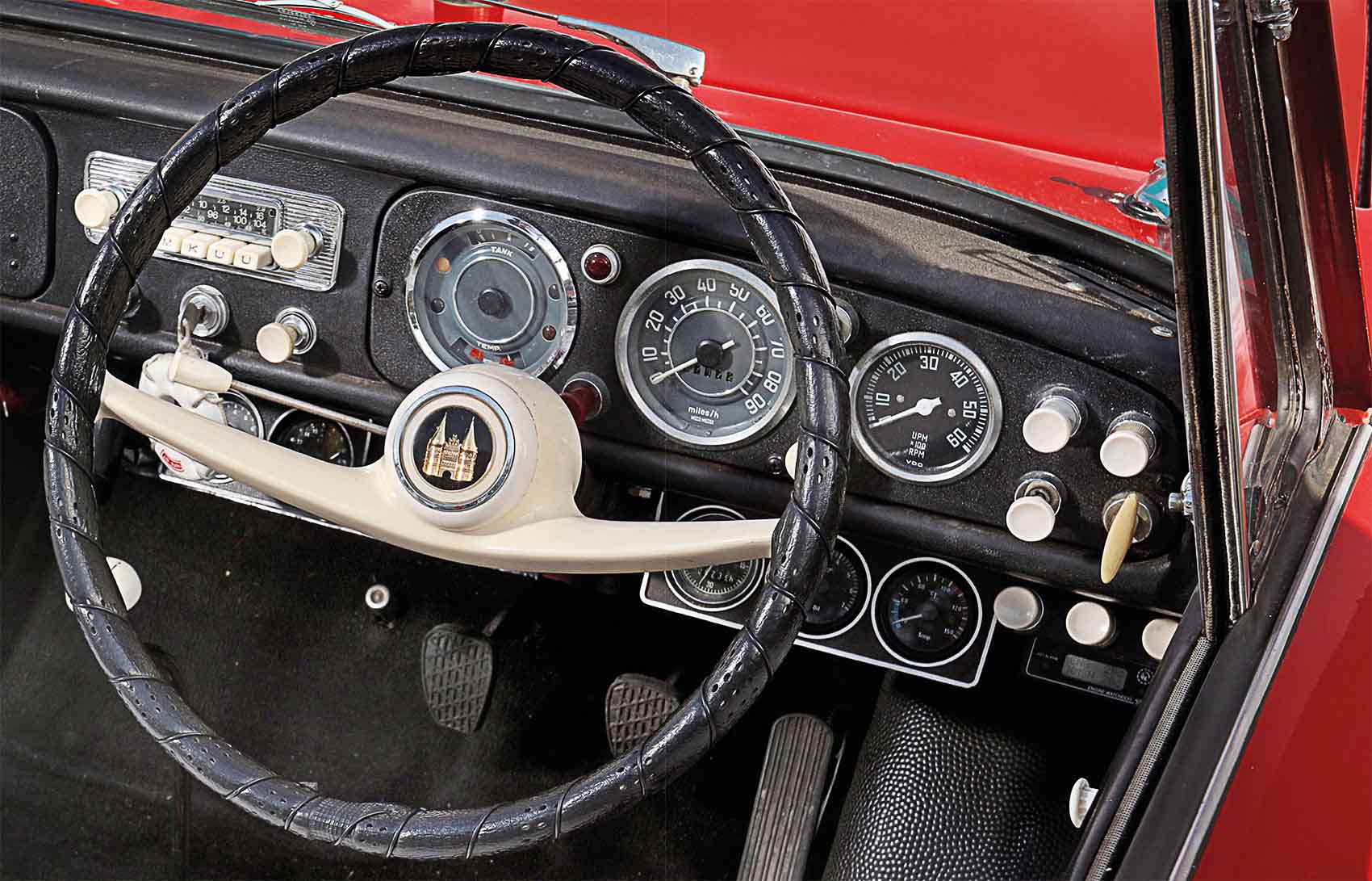
Controls for water and land use
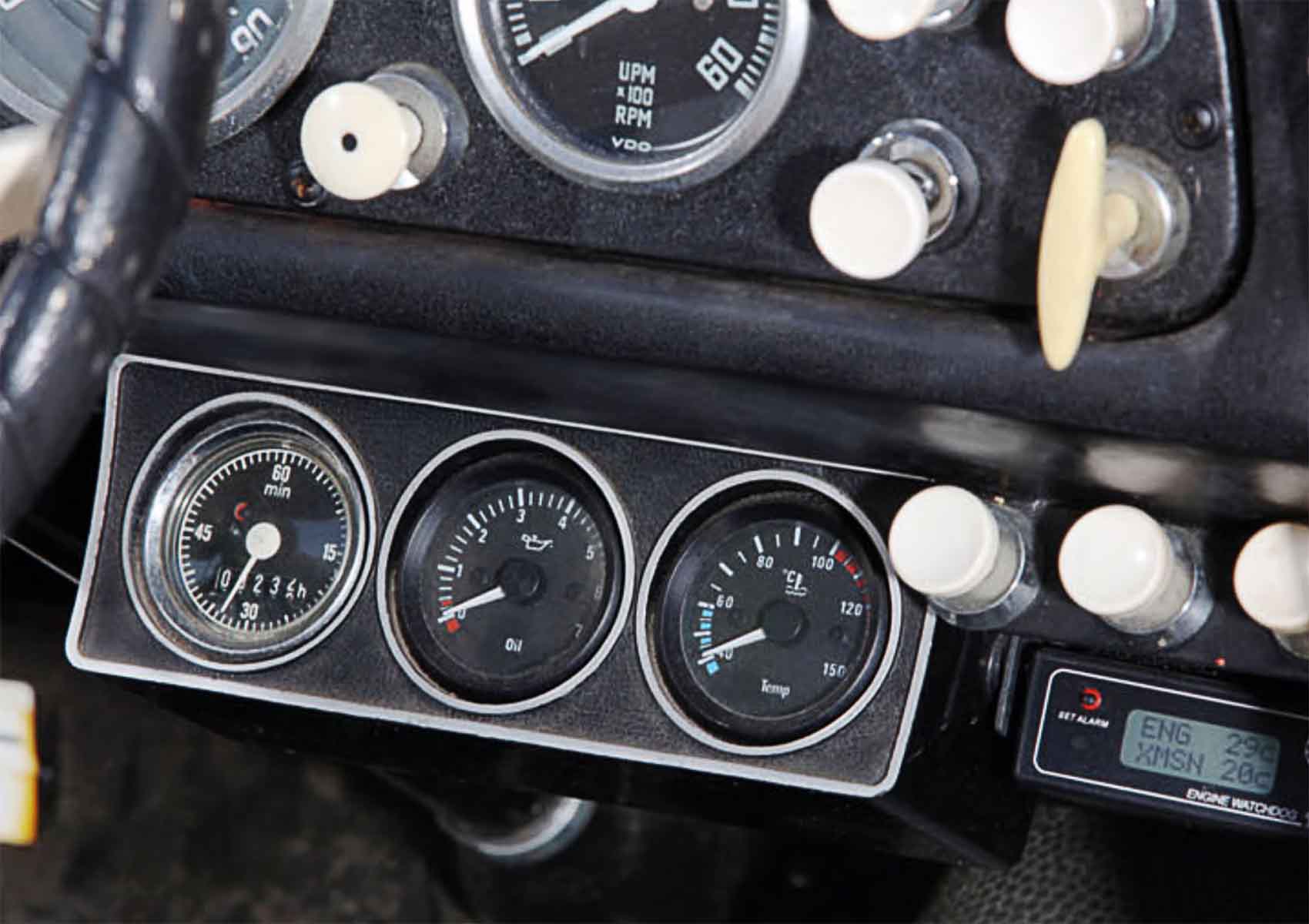
Cream-coloured throttle controls speed on water
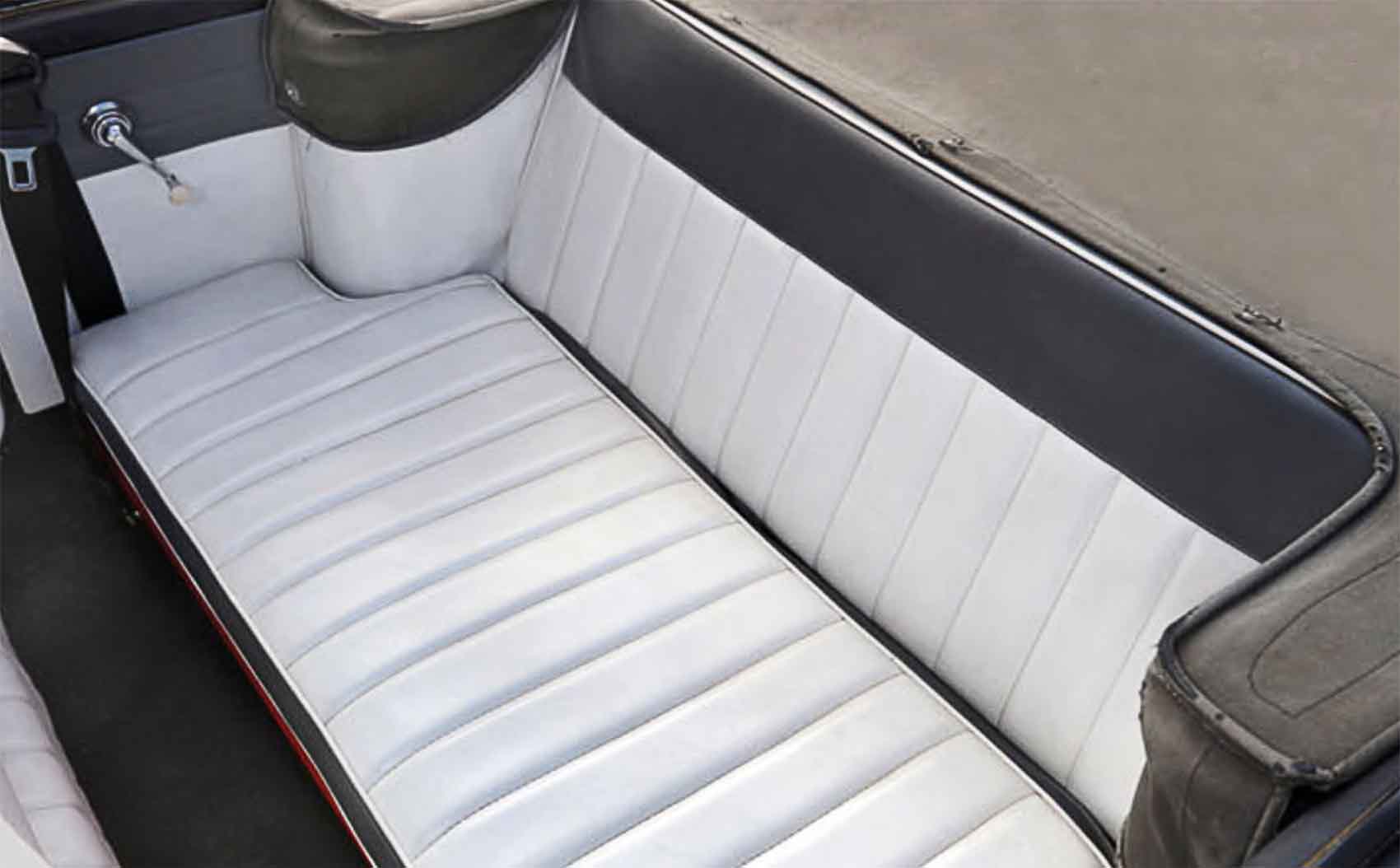
Snug rear seating for two
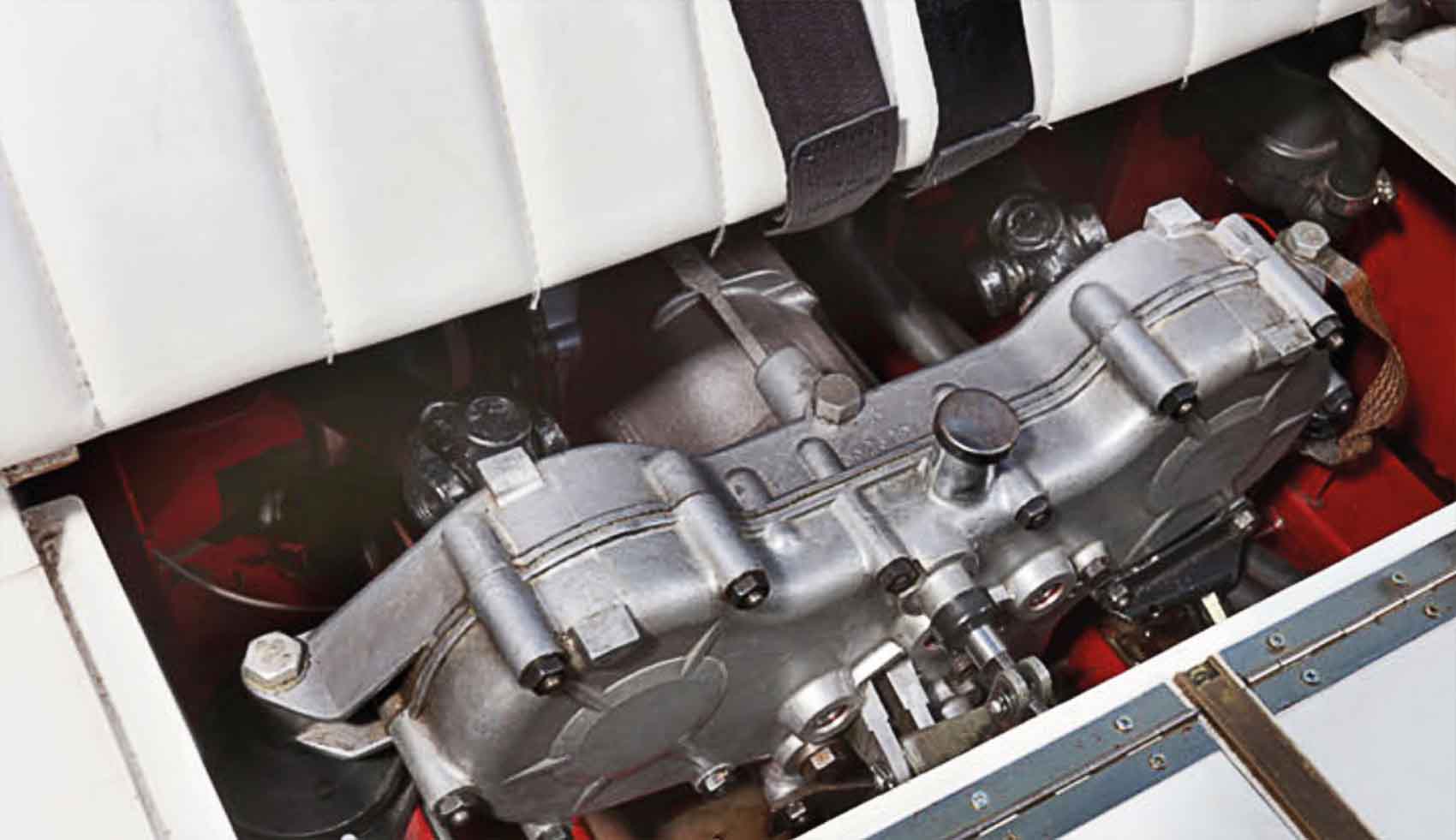
Separate engine powers rear propellers
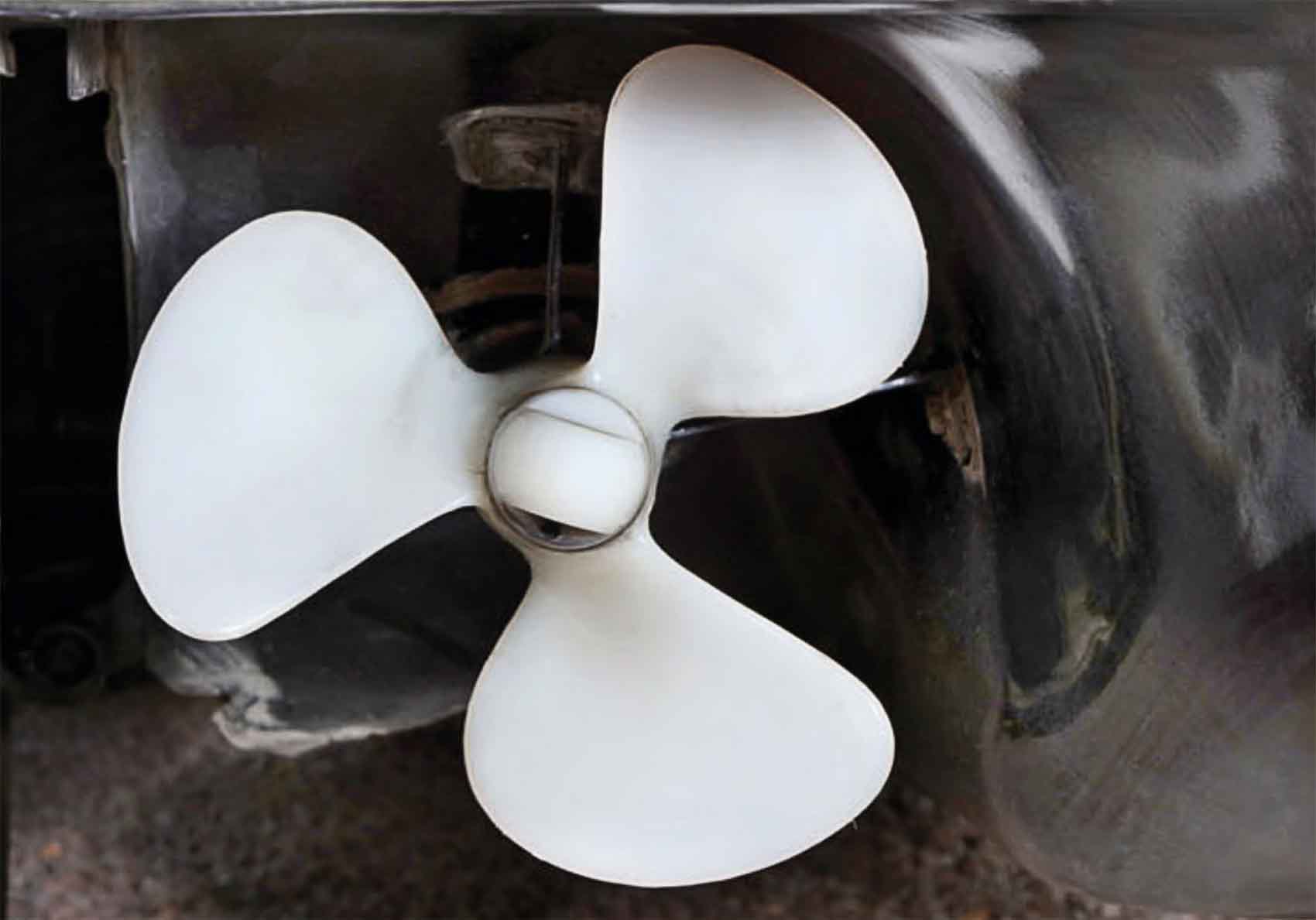
Propellers either side of car drive it through water
It is a quote. The Classic Car Book – The Definitive Visual History 2016




